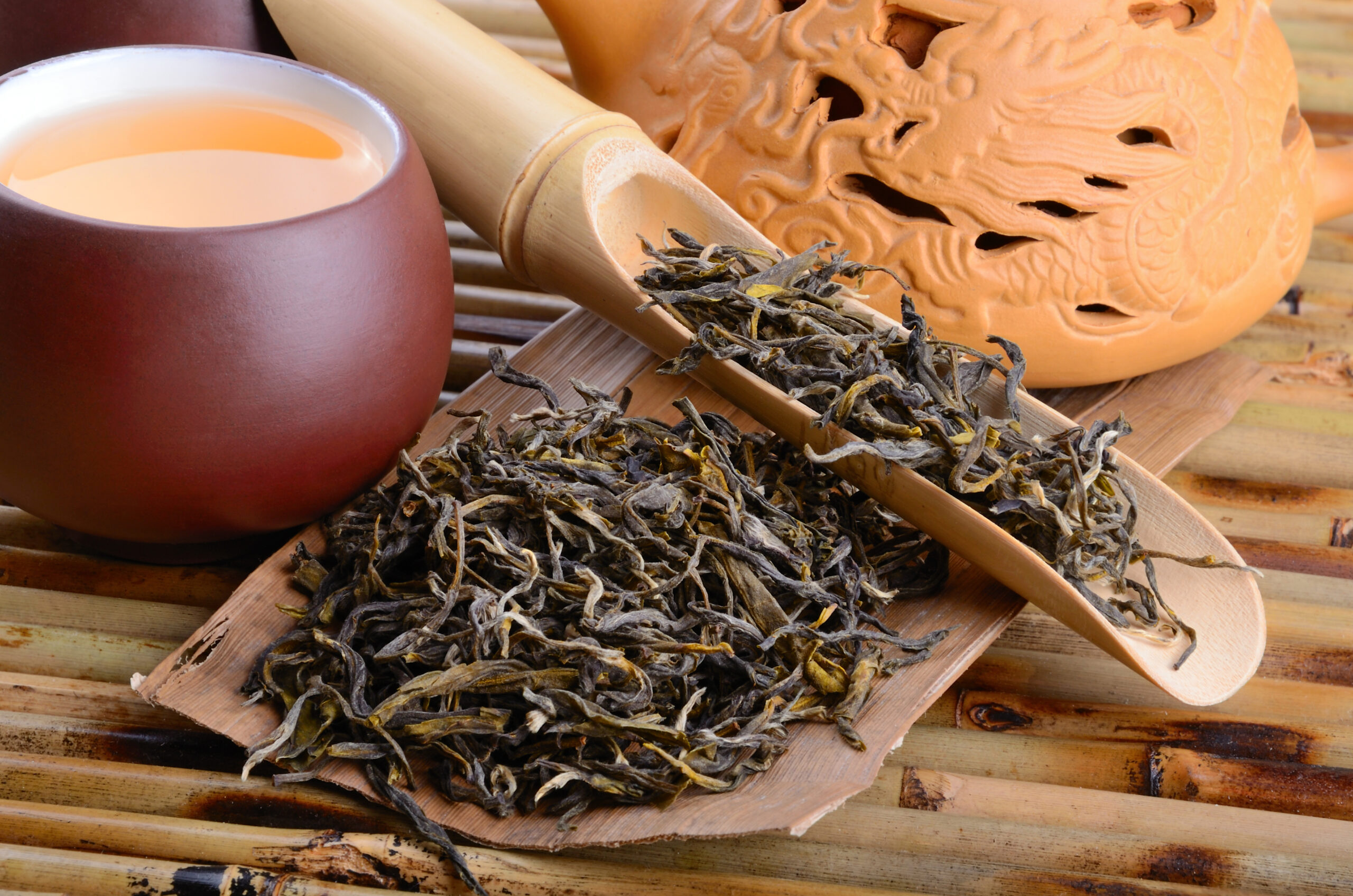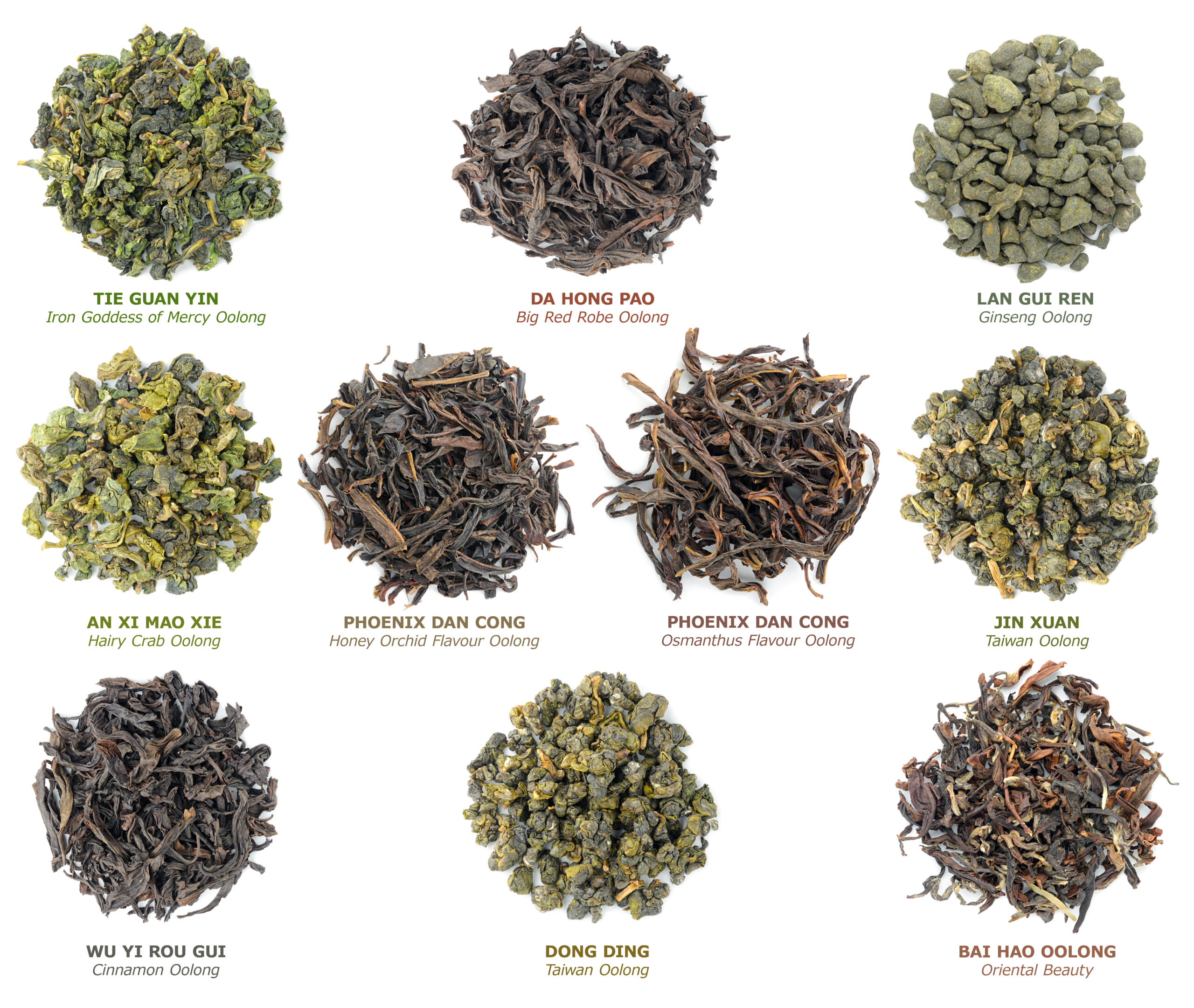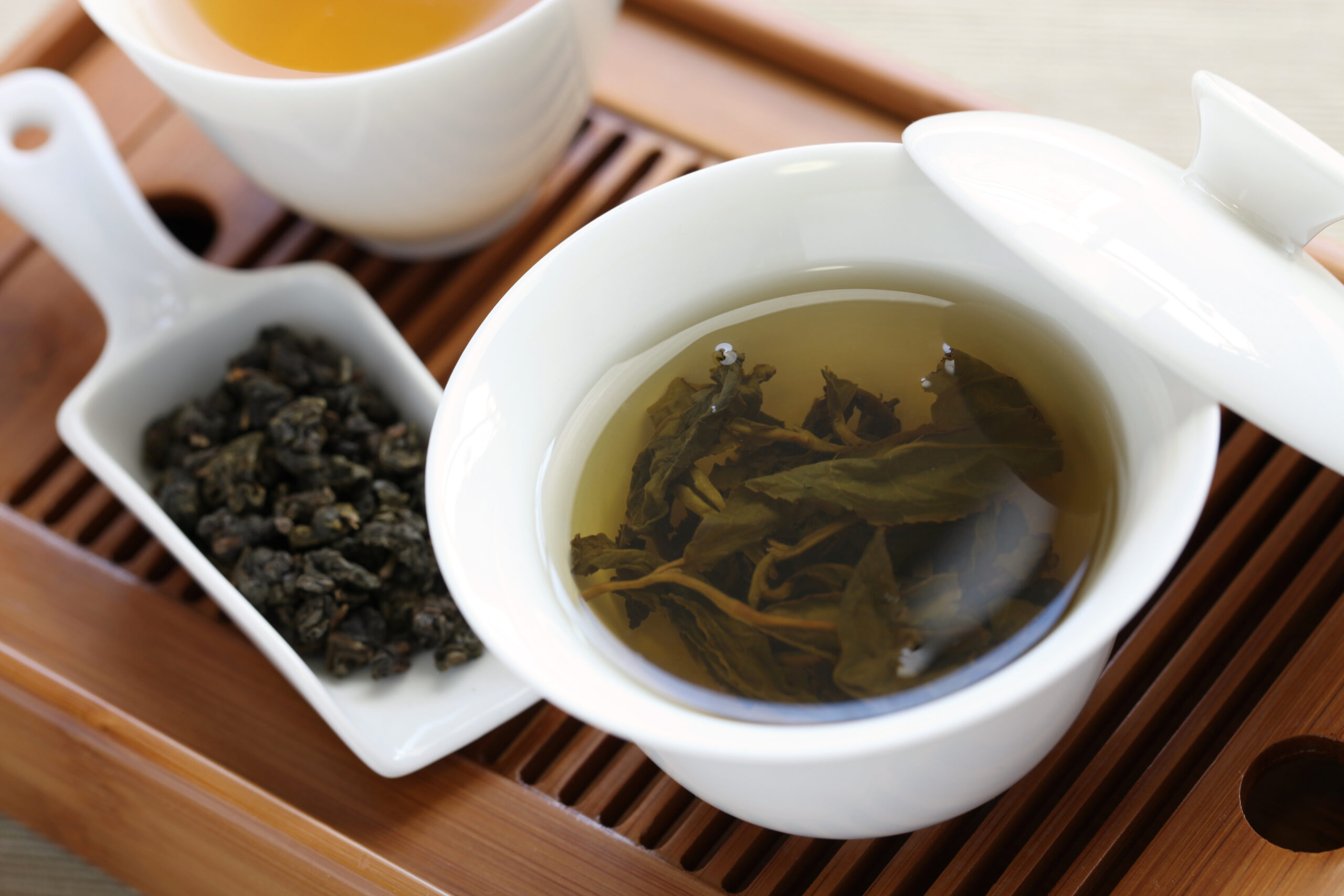What is oolong tea?
Like green, jasmine and black teas, oolong—also called Wu Long—comes from the Camellia sinensis plant. The main difference lies in the degree of oxidation. Black tea is fully oxidized, which gives it its distinctive color and aroma.
Green tea, on the other hand, undergoes minimal oxidation, allowing it to retain its original green color. Oolong sits between the two, being semi-oxidized. The oxidation rate can range from 8% to 80%, depending on the producer.

A hallmark of oolong is its distinctive appearance. Its leaves are generally large and either twisted or rolled into small balls.
This rolling affects the tea’s final flavor and color. Some oolongs even show bluish highlights, hence its other name: blue tea.
What does oolong tea taste like?
The taste of oolong is shaped by several factors, including the degree of oxidation, how the leaves are rolled, and elements such as the growing environment and harvest time.
Flavor can vary greatly from one region to another. In China, oolong tends to lean closer to black tea, while in Taiwan it is more akin to green tea.
The flavor palette of oolong tea is remarkably diverse. Some teas deliver rich notes of chocolate, while others evoke floral, buttery, or nutty aromas. Some even suggest fresh fruit. Amazingly, all these nuances can come from the very same batch of tea leaves. Making oolong is truly an art.

History of oolong tea
You might wonder where the name oolong (or wulong) comes from. Several theories exist. Some think it was inspired by the broad, oxidized, rolled leaves, which evoke the dragon of Chinese mythology.
Others attribute the name to Wu Liang or Wulong, a tea grower said to have discovered this style by chance. While picking new leaves, he supposedly left the ones he had already gathered to oxidize, giving rise to oolong tea.
Today, the most renowned oolongs come from China and Taiwan, but they are also produced in India, Sri Lanka, Japan, Thailand, and New Zealand. In China, cool, mountainous growing conditions contribute to the tea’s unique flavor.
How is oolong tea produced?
Styles of oolong vary widely from one region to another, much like wines in France. Some teas grow on isolated, mist-shrouded mountains, while others develop in temperate foothills bordered by bamboo forests.
Some leaves are picked in spring for a grassy profile, whereas others are harvested and roasted in winter for a woody, full-bodied taste. Some oolongs are rolled into small balls, while others are twisted into long strands.
Whatever the style, production generally follows these steps: after picking, the leaves are withered and partially oxidized. This process yields leaves that are either tightly rolled or twisted. They are then roasted and dried, which imparts a rich, nutty flavor. Finally, producers sort them by shape, size, and color.
How to brew oolong tea?
As with other teas, brewing oolong calls for careful attention to water temperature, tea quantity, and steeping time. These parameters also vary with the tea’s degree of oxidation.
In general, use about 240 ml of water for 2 grams of tea. It’s best to use cold, filtered spring water. Heat the water to 82 to 93 degrees Celsius, then pour it over the tea leaves.
The ideal steeping time ranges from 60 seconds to 3 minutes, and it’s shorter for teas rolled into small balls. Be sure to cover your teapot during infusion to retain heat. Oolong can be infused 3 to 5 times, each infusion revealing a new nuance of flavor coaxed out by the producer.
For best flavor, enjoy oolong without adding milk or sugar, so you can fully appreciate its character.
Oolong tea in cooking
As with other teas, oolong pairs beautifully with a variety of dishes, from fish and seafood to red meat. It also flatters chocolate desserts and lighter sweets.
In Chinese and Cantonese cooking, oolong can even become an ingredient in drinks such as the famous Taiwanese bubble tea (especially the taro version) and in dishes like tea eggs or tea-brined shrimp. It is also used in the filling of some Dim Sum.
The benefits of oolong tea
Like other teas from the Camellia sinensis plant, oolong offers many health benefits. Rich in antioxidants such as theaflavins, thearubigins, and EGCG, it helps combat harmful bacteria and neutralize free radicals that contribute to diseases like cancer and diabetes.
It may also support cognitive function and protect cardiovascular and dental health. Oolong has anti-inflammatory properties that can help ease some common issues.
Moreover, if you’re looking to lose weight, oolong can be an excellent choice, as it stimulates metabolism and speeds up thermogenesis, thereby promoting fat burning.
Where to buy oolong tea?
It’s best to buy oolong from reputable companies and specialty tea shops. Check the tea’s degree of oxidation; generally, the more oxidized it is, the longer it will maintain its quality.
How to store oolong tea?
Once purchased, oolong should be properly packaged and stored in a dry, cool, dark place. Also make sure it isn’t placed near strongly scented items such as coffee or spices. Properly stored, oolong can maintain its quality for 6 months to 2 years.

Ingredients
- 240 ml water
- 2 grams oolong tea
Instructions
- Bring 240 ml of spring water to a boil in a kettle or saucepan.
- Use a thermometer to confirm the water is 82 to 93 degrees Celsius.
- Place the oolong tea leaves in a teapot or infuser cup.
- Pour the hot water over the tea leaves.
- Cover the teapot or infuser cup to keep the heat in.
- Steep for 60 seconds to 3 minutes. If the tea is rolled into small balls, opt for a shorter steep.
- Remove the tea leaves and pour the tea into a cup.
Notes
- Oolong tea can be re-steeped 3 to 5 times; each infusion reveals a new nuance of flavor.
- For the best flavor, avoid adding milk or sugar.
- For best results, always use cold, filtered spring water.
- Steeping time can vary depending on the tea’s level of oxidation. Adjust to taste.

